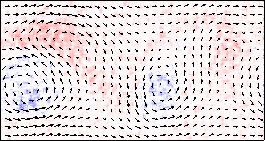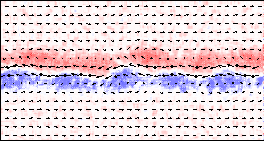
The study of fluid dynamics by means of lattice-gas models is today one of the most important applications of cellular automata. Our group originally contributed to the birth of this field; today, the CAM-8 architecture provides perhaps the best computing platform for lattice gas investigations. We are intensively collaborating with Phillips Laboratory, Hanscom Field, MA on a variety of novel problems and methods. (We also have ongoing collaborations with Bruce Boghosian, at Thinking Machines, and Dan Rothman, at MIT).
Phillips Laboratory, who have two CAM-8 prototypes and are expecting more, have commissioned a larger version (1 billion sites) and are soliciting the development of much larger and faster versions, which would be very useful in their computational physics program.
Lattice-gas models are useful for achieving a theoretical understanding of complex fluids. Moreover, in concrete applications, they outperform traditional models when there are complex boundary conditions (e.g., flow in porous media, where every element of the fluid is near a boundary) or highly nonlinear interactions (e.g., condensation with formation of droplets).
Here we illustrate some ``warmup'' simulations done to certify hardware and software. In the next two section we present original results.
The figure below is the result of a CAM-8 simulation on a 4K\by 2K lattice. It illustrates the vortices that arise in a channel with a central counter-current. Rendering was done by coarse-grain averaging over regions of 128\by 128 sites and 50 time steps. The arrows represent direction and intensity of flow; the color, intensity and chirality of the vorticity.
